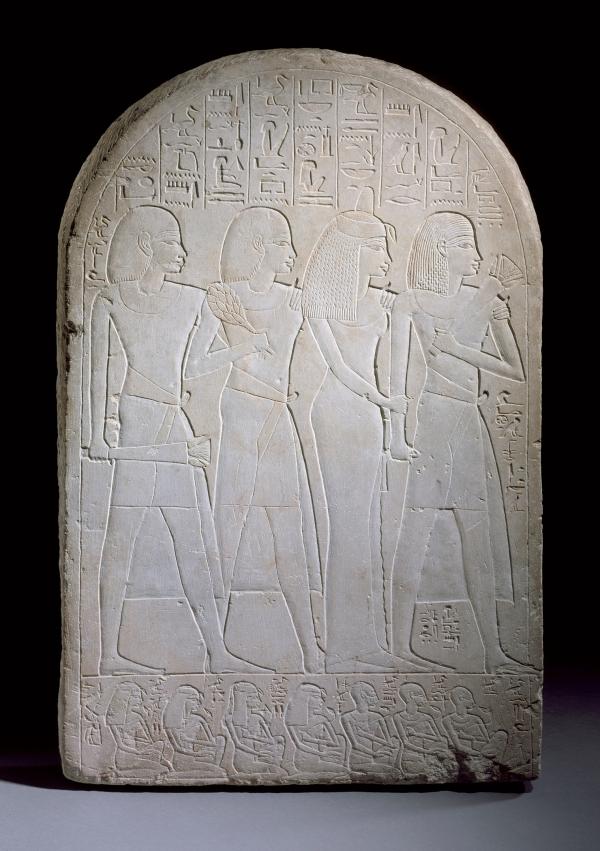A stela is a flat slab or pillar of stone designed for a commemorative purpose and usually marked with text or images (a tombstone, for example, is a type of stela). This Egyptian version was created during the reign of King Amenhotep III in the middle of the Eighteenth Dynasty (1391–1353 BC), a stable and prosperous period considered the height of ancient Egyptian artistic production. The stela’s details, notable for their intricacy and graceful contours, are carved in varying levels of relief, with the most important elements receiving the deepest inscription—a process known as sunk-relief. Its entire surface was originally painted, although today only traces of the pigment remain.
On the right is the figure for whom the stela was created, a noble from the capital city of Thebes named Iuf-er-bak, also identified by the hieroglyphs at the top, which describe him as "guardian of the store-house of the Temple of Amun." His wife, Nebet-iunet, and two sons accompany him. These four figures, all depicted in a youthful state, exemplify the standard style among ancient Egyptian artists: their eyes and shoulders are shown frontally and their heads and lower bodies are shown in profile, which Egyptian artists believed was the best way to provide a comprehensive view of the human body. The woman stands with her feet together, and the men with their feet apart, carrying floral funerary offerings. Egyptian artists used scale to indicate relative degrees of importance: in the lower register, seven additional, noticeably smaller, family members participate in a funerary banquet.
This stela was probably made for the necropolis (city of the dead) of Western Thebes, where it would have been placed in the tomb of the deceased. Most stelae from this period were created to ensure that the tomb owner would receive the offerings necessary to survive in the afterlife, which the ancient Egyptians conceived as an actual physical existence requiring sustenance. The deceased's ka, the aspect of a person that could be represented in artistic form, dwelt within the mummy or the tomb statue, and needed life-preserving goods such as food and drink, which the living provided through offerings. Egyptians believed that representations of the deceased helped assure survival of the self.
This stela is unusual in that its text contains no direct request for funerary offerings, nor is there a depiction of the tomb owner and his family receiving offerings from a specific deity. The inclusion of relatives and biographical information may have been meant to ensure that family members and/or funerary priests would provide offerings forever.
Round-Topped Stela is on view in the Egyptian galleries in the Hammer Building.



